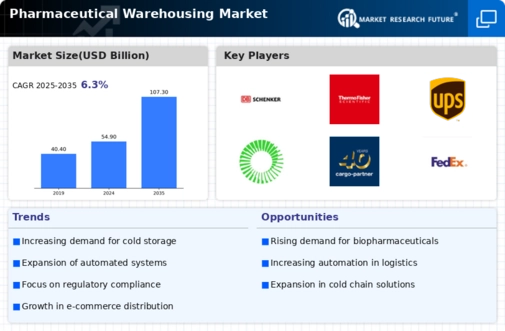Market Analysis
In-depth Analysis of Pharmaceutical Warehousing Market Industry Landscape
The pharmaceutical warehousing market has a vital function in the supply chain for healthcare that provides the storage, handling, and shipment for pharmaceutical products. Industry dynamics in this genre is determined by a wide range of factors which collectively decide its nature. The increasing requirement for trusted and efficient storage technologies is another major factor because of the I snowing expansion in the pharmaceutical sector. With the development of the industry, the number of extensive warehousing facilities increases. The warehousing facilities must follow the highest standards and protect the integrity of special drugs.
Regulatory compliance in its turn is a crucial element which determines market dynamics. The pharmaceutical industry is a heavily regulated one and therefore it enforces stringent policies to propel drug distribution and storage standards to higher levels. In terms of warehousing, the facilities comply to the GDP principles and further regulations that agree on the quality and safety of pharmaceuticals. As a result, a constantly rising variety of pharmaceutical warehouses where crimped temperatures, enhanced security, and advanced tracking systems is all the rage.
Advanced technology is the other reason for the acceleration in the dynamics found in pharmaceutical warehousing. High-level technologies that include RFID (Radio Frequency Identification), IoT (Internet of Things), and automation technologies have become dreams in the warehouse operations optimization. The technologies boost inventory management, resister the errors, and raise the overall productivity. While pharmaceutical companies implement these innovations to run their supply chains smoothly, they drive up the demand for advanced warehouse services.
Globalization in fact is also topping the reasons for market dynamics change. Drug producers are usually in the process of growing their businesses in different locations then they are faced with the challenge of an integrated supply chain across the globe. This has resulted in an increase of global logistic providers and a broader use of warehousing, which can satisfy the substantial need caused by complex international distribution. The capability to handle border to border shipments, without delays, while being able to comply with multiple layers of regulatory frameworks is an integral part of pharmaceutical warehousing.
From cost considerations, it happens that the market direction is determined. Pharmaceutical companies have to cut on investment costs as low as possible but at the same time maintain the quality standards. Therefore, the pharmaceutical industry has been hiring the services of third-party logistics providers (3PLs) to financially benefit from outsourcing for cost-effective solutions. During the latest years, the outsourcing trend is very up-and-coming in the pharmaceuticals warehousing market and as a result, the providers are competing in small spaces, thus, they provide high quality services such as temperature-controlled transportation, packaging, and order fulfillment.












Leave a Comment